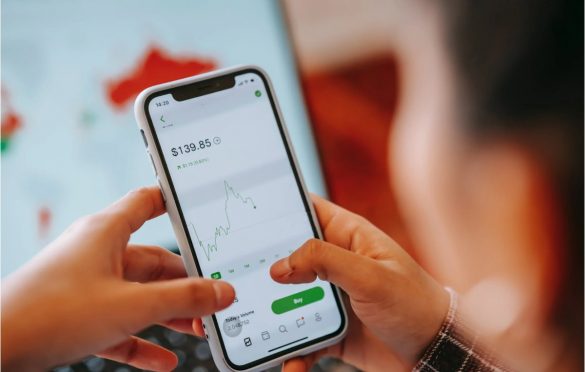
Taking Advantage of Currency Correlations
Understanding the way market fluctuations impact your portfolio is crucial if you want to be a prosperous trader.
And, this is particularly relevant when we speak about FX trading. The currencies are mutually valued in pairs.
And no pair trades independently from the other ones. But, once you comprehend the currency correlation definition and the principle on which they fluctuate, you may use that knowledge to administer the exposure of your entire portfolio.
Correlation is a term used to describe a relationship between two or more variables. The rationale for currency pairings’ interdependency is obvious:
Correlations are Fluid and Shift Over Time
Correlation is used to measure the connection between two financial securities in the monetary sector. The correlation coefficient can take a value between -1.0 and +1.0. A positive correlation of +1 means that the chosen currency pairings are always going to move in the same direction. Likewise, a correlation of -1 can interpret that the select currency pairing will always keep moving in the opposite direction. A correlation of 0 indicates that the currency pairings’ connection is purely random.
As a result, it is evident that correlations fluctuate, so tracking changes is even more important at this point.
Global economic changes are very dynamic and fluctuate on a daily basis. It means that today’s firm correlations between certain currency pairings may not imply a longer-term connection between them. That’s why it’s equally crucial to look at the long-term trailing correlation. This gives a more clear idea of the typical six-month link between two currency pairings, which is generally more precise. Diffusing fiscal policies, a currency pair’s susceptibility to prices of other commodities, as well as distinct political and economic circumstances are some of the reasons why correlations tend to shift.
How to Calculate Correlations?
Calculating your correlation pairs is the most accurate approach to staying current on their strength and direction. Although this seems to complicate, it is quite straightforward. In addition, correlations for many different inputs may be easily calculated with the help of specialized software.
Of course, you can simply use a spreadsheet tool (Excel) to compute a fundamental correlation. Several charting software (including some free ones) provide historical daily currency values, which you can then import into a spreadsheet. Then, simply utilize the correlation function in Excel, which is =CORREL (range 1, range 2). The trailing readings of the different periods (yearly, quarterly, monthly, etc.) provide the most comprehensive perspective of correlation differences and similarities for the time period. It is up to you to decide which reading to study.

How to Trade Forex Using Correlations?
Now that you’ve learned how to compute correlations, it’s time to look at how you might put them to work for you.
In the beginning, they may advise you against joining mutually exclusive positions. So, knowing that EUR/USD and USD/CHF move in opposite directions almost every time, you can see that portfolio consisting of long EUR/USD and long USD/CHF is pretty much the same as having no position—because, as the correlation shows, when EUR/USD ratio rises, USD/CHF will sell down. So then, as the correlations are that high, holding long AUD/USD and long EUR/USD is similar to doubling up on the same position.
The next point to consider is diversification. As the AUD/USD and EUR/USD have had a low mutual correlation in the past, traders may employ these two pairs to diversify the risk while retaining a core approach. For example, instead of purchasing two lots of EUR/USD, a trader may purchase one lot of EUR/USD and one lot of AUD/USD to reflect a negative stance on the USD.
There is greater diversification and a slight reduction in risk because of the faulty connection between the two currency pairings. Furthermore, since the central banks of Europe and Australia have distinct monetary policy orientations, the Australian dollar may be less influenced than the euro in the case of a dollar rise, or vice versa.
Different point values may also be used to a trader’s advantage. Let’s have a look at the EUR/USD and USD/CHF exchange rates once again. Although they have an almost-perfect negative correlation, a pip shift in the EUR/USD is worth $10 for a lot of 100,000 units, but a pip move in the USD/CHF is worth $9.24 for the same amount of units. This means that traders may utilize USD/CHF to hedge their EUR/USD risk.
Here is an example of how the hedge would function: Assume a trader’s portfolio included one 100,000-unit short EUR/USD lot and a 100,000-unit short USD/CHF lot. If the EUR/USD rises ten pips or points, the trader will lose $100 on the position. However, since the USD/CHF travels in the opposite direction of the EUR/USD, a short USD/CHF position would be beneficial, potentially heading up to $92.40.
- This reduces the portfolio’s net loss to -$7.60 instead of -$100. Of course, in the event of a big EUR/USD sell-off.
- this hedging implies fewer earnings, but in the worst-case scenario, losses reduce.
- Understanding the association between numerous currency pairs and their moving patterns is critical,
- Whether you want to diversify your holdings or uncover other pairings to leverage your perspective.
- All professional traders with many currency pairs in their trading accounts should be aware of this. Traders may use this information to hedge, diversify, or double their gains.
- Understanding how various currency pairings move concerning one another is critical if you want to be a successful trader.
- And, comprehend your risk. Some currency pairings move in lockstep, while others may be diametrically behind.
- Learning about currency correlation may help traders better manage their portfolios.
- No matter which trading strategy you choose and whether you’re attempting to diversify your holdings or locate new pairings to leverage your position, it’s critical to remember the link between different currency pairs and their changing patterns.



